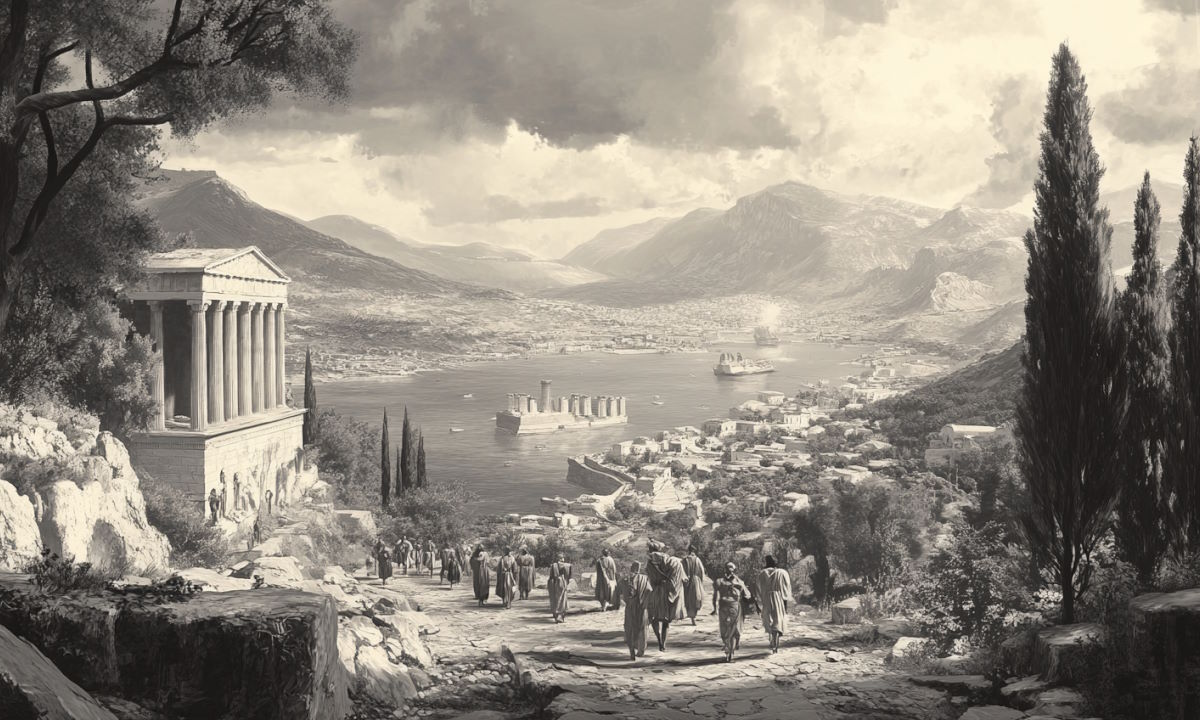Last summer, top officials from NASA and the European Space Agency (ESA) arrived at Sarakiniko, Milos. They were not just there to admire the surreal, moon-like landscape but to study it. To their trained eyes, this is not just a stunning natural site but an invaluable scientific landmark on Earth. Sarakiniko provides crucial insights that can aid in the exploration of new planets. It is also unfathomable to them that this area is not protected from various threats and vandalism. What they didn’t know was that the very spot where they carefully placed their feet had been bulldozed to make way for a hotel.
Dr. Anezina Solomondou, a planetary geologist with experience at NASA and ESA, is originally from Milos. She is one of Greece’s most distinguished scientists, serving as the president of the Planetary and Solar System Sciences Division of the European Geosciences Union. Shocked by the recent revelation that investors have purchased part of Sarakiniko and begun constructing a hotel, she states, “For every meter that is dug up, thousands of years of geological history are lost.”
Simulations of Robotic Systems
To the untrained eye, Sarakiniko is simply a breathtaking place where white volcanic rock meets the deep blue Aegean Sea. However, to scientists, it is much more. “It is a natural geological archive unlike any other on Earth, a unique geosite,” Dr. Solomondou explains. “That is why it is so useful to us—it serves as an ideal terrestrial analogue for space studies, particularly for the exploration of the Moon and Mars.”
Sarakiniko is used for astronaut training and testing robotic systems like the Mars Rover. Scientists analyze its terrain, which closely resembles extraterrestrial landscapes shaped by volcanic activity, meteorite impacts, and other geological phenomena that are difficult to study firsthand on other planets.
Sarakiniko was once an underwater volcano that erupted 23 million years ago, taking its present form around 1.5 million years ago. This makes it an exceptional site for studying volcanic activity and understanding the geological evolution of the Aegean volcanic arc.
Fossils: A Prehistoric Archive
The construction of a five-star hotel at Sarakiniko is causing irreparable damage. The area being excavated for villas, a reception area, and swimming pools contains fossils dating back 1 to 1.5 million years. These include invertebrates such as bivalves, gastropods, brachiopods, echinoids, and barnacles. Additionally, microfossils from diatoms, dating back 1.95 to 1.73 million years (early Pleistocene), have been discovered.
The importance of these fossils in understanding the planet’s prehistory cannot be overstated. The fossilized remains embedded in Sarakiniko’s white rocks offer invaluable insights into marine life from millions of years ago, allowing scientists to study how these organisms interacted with their volcanic environment.
However, heavy machinery—excavators, bulldozers, and trucks—has already trampled the rocks, erasing evidence preserved for millions of years. Fossils have been either discarded as debris or buried under cement foundations.
The Lack of Protection
Despite its scientific and cultural significance, Sarakiniko lacks any formal protection. In contrast, similar landscapes worldwide, such as White Sands in the U.S., Cappadocia in Turkey, and Lanzarote in the Canary Islands, are designated as national parks. In Lanzarote, any damage results in severe penalties.
“What should have been done here? Exactly what is done abroad,” Dr. Solomondou asserts. “Sarakiniko should be a national park with controlled access. It is unbelievable that this area has not been classified as a site of cultural and geological significance.”
Historical Significance: From Pirates to Modern Tourists
Sarakiniko derives its name from Saracen pirates who used the area as a hideout during medieval times. Its inlets and caves provided a perfect refuge for their ships and stolen treasures. Even the legendary pirate Barbarossa is said to have used Sarakiniko as a base.
Over time, this geological wonder evolved from a pirate lair into one of the world's most famous natural landmarks. In 2023, it was voted the fifth most beautiful beach globally, and Conde Nast Traveller previously ranked it the seventh most stunning location on Earth. Just last summer, during the international scientific workshop Terrestrial Analogues for Solar System Studies, 60 top planetary scientists gathered at Sarakiniko to study its extraterrestrial-like terrain.
However, the site now faces an unprecedented threat. Without immediate action, humanity risks losing a one-of-a-kind geological treasure to reckless development.









